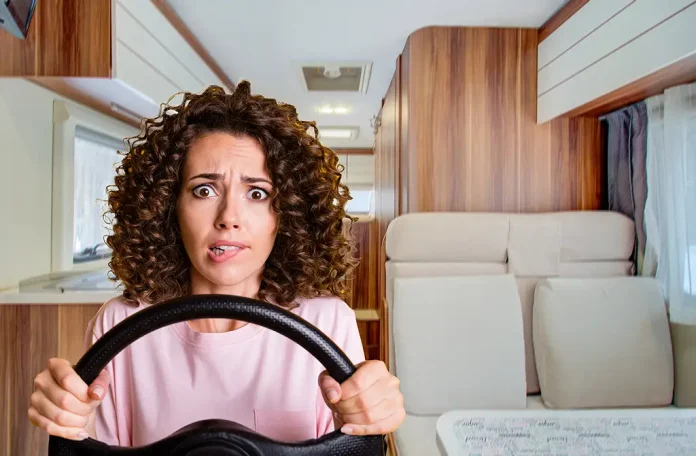Driving a motorhome for the first time can be a bit daunting, but with a little preparation, you’ll be good to go! Forget what people say about them driving like a car because when you first start out, especially in a large motorhome, those first few miles can be pretty scary.
The truth is, motorhomes aren’t like cars – they have bigger blind spots, they take longer to accelerate and stop, and it all takes a bit of practice to get used to. But don’t worry, with a little time and experience, you’ll be cruising in your motorhome like a pro!
THINGS TO KNOW BEFORE DRIVING A MOTORHOME FOR THE FIRST TIME
It’s important to know a few vital statistics. Don’t rely on your memory. Write these figures down and put this where you can see it. I keep a note stuck to my sun visor.
DIMENSIONS
While the motorhome will feel bigger than your car, you should know the dimensions exactly. Height, width and weight, you’ll need to know often, length is not so important unless you are booking a ferry!
HEIGHT
There are plenty of height restrictions. You’ll see them at car parks, supermarkets and on the road, so it’s important to know how high you are.
How to find your height
You might find the height in the brochure, but who knows if they measured it before that solar panel was added? To be sure, you should always measure it yourself. To do this, you’ll need some help.
Park it somewhere level, place a straight edge on the highest point. I use a piece of wood with a sprit level taped to it. Get that bit of wood level and measure the drop.
That is your height. You will forget this figure, so write it in big letters and stick it on your sun visor.
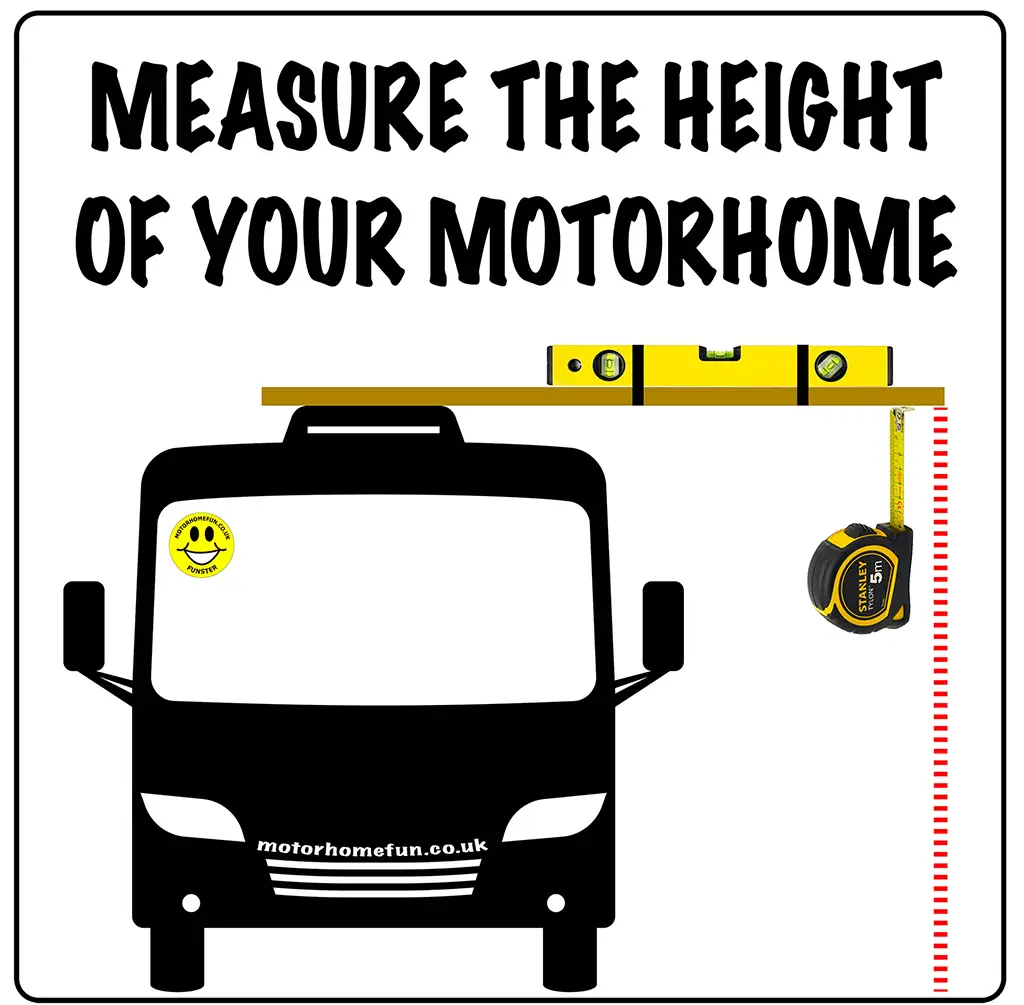
HOW WIDE ARE YOU?
Width restrictions that affect motorhomes are not that common, but you should know how wide you are, including those wing mirrors
LENGTH
This is often the dimension you worry about the least. Length doesn’t get you into half as much trouble as height or width; it tends to follow you along.
Know your speed limits
These might be different from what you are used to. Check this article out. https://www.motorhomefun.co.uk/portal/motorhome-speed-limits-in-uk/
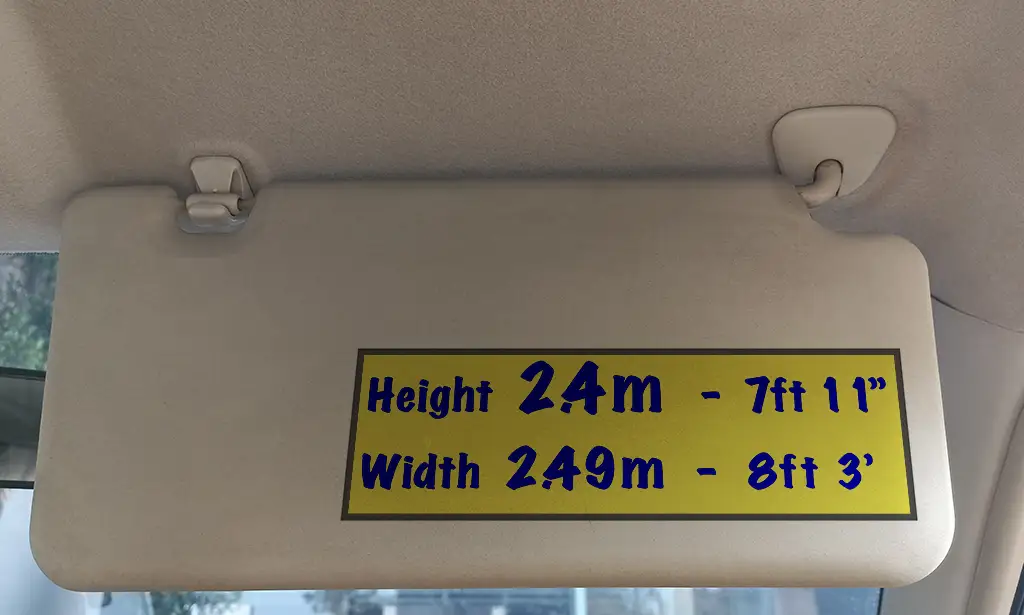
COCKPIT DRILLS
Driving your motorhome isn’t just about starting the engine and driving off. There’s the important cockpit drills to consider – a series of safety checks to ensure everything is set for a safe drive. Before you carry out these checks, make sure everything is safely stowed. You wouldn’t be the first person to set off with a kettle on the stove!
DOORS
Make sure all doors are firmly closed. Especially the habitation door and check the step is in.
STEERING:
Adjust the steering wheel’s angle and tilt as per your comfort, making sure it doesn’t block your view of the instrument panel. Be mindful of the airbag deployment zone.
SEATBELT
Buckle up! Teaching you to suck eggs I know, but If I omitted belts from the cockpit drills someone would complain.
MIRRORS AND BLINDSPOTS
Properly adjust your motorhome mirrors to optimise visibility. You are going to have some blind spots, and they are going to be larger than any in your car, which means you must use your mirrors a lot more than you are used to.
Take regular caution by checking your side mirrors or the camera screen to ensure there are no vehicles in your blind spot before changing lanes.
SEAT
Adjust your seat according to your height and distance from the pedals. If it’s manual gears, then your clutch leg shouldn’t be fully straight or too bent. You should easily see through the middle part of the windscreen and the instrument panel.
Don’t forget to adjust the head restraint – it’s there to protect your neck and spine; get it up so the middle is behind your ears.
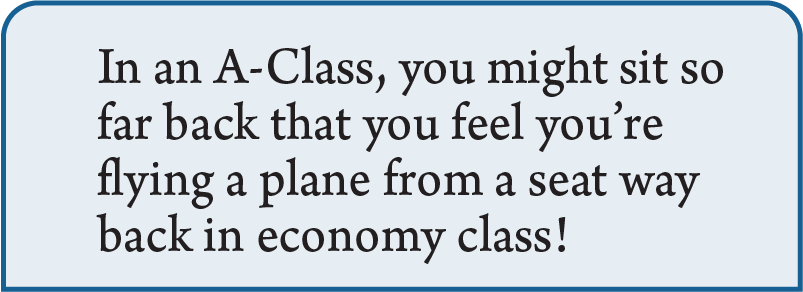
Like the best cars, the driver’s seat of most motorhomes can be adjusted in many ways, get comfy and in a good position to see and operate everything.
You’ll probably be sitting higher, which is good. If it’s an A-Class, you might sit so far back that you feel you’re flying a plane from a seat way back in economy class!
You’ll quickly get used to it though and pretty soon you’ll realise you are actually in First Class.
EASY PEASY MOTORHOME DRIVING
If you have a quiet area to practise, then use it. If this is impossible for you, then go out at the quietest time of day. 5am in the summer is a great time to hit the road.
GIVE YOURSELF TIME AND SPACE
Navigating a motorhome for the first time is akin to those initial moments as a teenager when you first started driving. You are probably going to be a little uncertain and everything just feels a little awkward and strange.
By not making your maiden run out at a busy time, your normal road sense and experience will keep you safe while you learn to drive this new beast!
TRY THE SUPERMARKET
Driving a motorhome for the first time is daunting, but it gets easier with practise. So get out and practise. One of the best places I always suggest is a large supermarket carpark; one that is open really early in the morning. I mean really early, like 4:30 am early! This is a great place for learning to park, for three-point-turns and reversing.
Those bays will get you used to how wide and how long you are. You can practise turns, reversing and parking. Keep an eye out though; those car parks even at 4:30 am have people in and out.
A partner outside with a two-way radio, backing you up, and keeping an eye out for cars and pedestrians, is a big bonus.
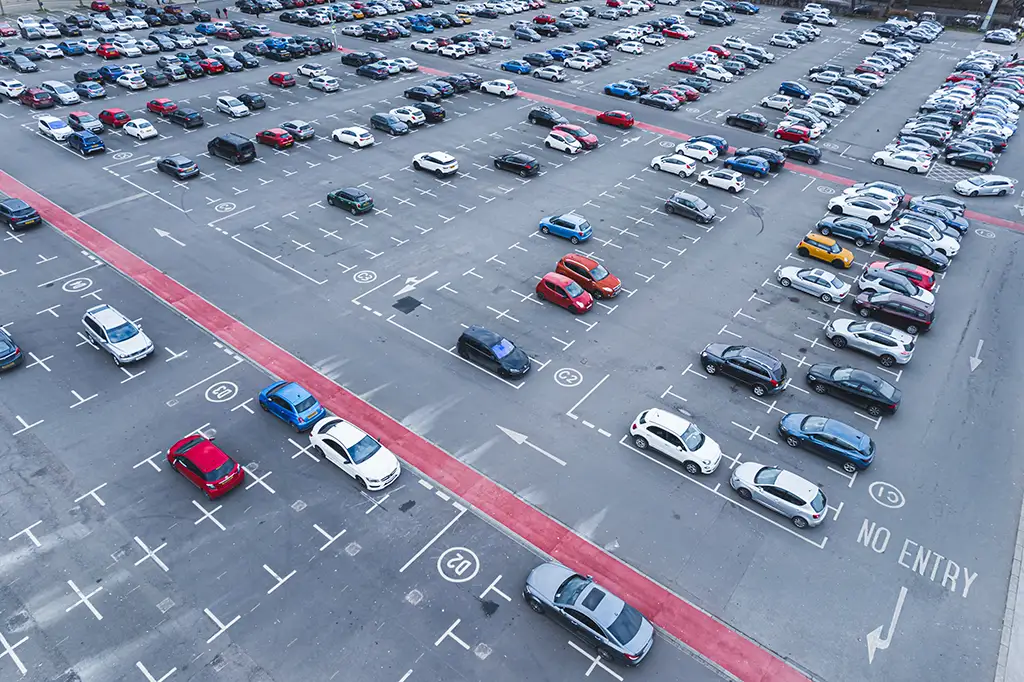
GETTING FUEL, DON’T GET TOO CLOSE TO THE PUMPS!
Petrol stations are a common place where Motorhome newbies can come unstuck.
I remember buying a brand new Auto-Trail from a South Coast Dealer. I’d paid him the best part of two year’s wages for van and just as I was pulling out of their yard I realised the cheapskate had put no fuel in it. I was on fumes!
Right in front of me was a Texaco garage. I swung in without giving a thought to the massive overhang as I’d never had one like it before.
To get out of the service station, I needed to do a hard left, but I’d parked so close to the pumps, a sharp turn was impossible. My rear end would collide with the pumps.
We know this as Tail Swing, where for a short time your motorhomes rear end moves in the opposite direction from where you are steering.
For me, the only way out was to reverse, but by now there was a queue of cars behind me. We got out eventually, but it was embarrassing and I never let the overhang get me stuck again.
If you are driving a big van, then in service stations, check out the exit route before you commit.
Always remember that overhang will push out in the opposite direction of your turn
DON’T MAKE THE FIRST DRIVE IN BAD WEATHER
Large motorhomes, especially those with Luton beds above the cab, can be affected by strong winds. Don’t make your first drive in bad weather.
Get some experience first. If you find yourself driving in bad weather, the most important thing to remember is to slow down even more than usual. Leave at least three times as much space between yourself and the vehicle in front as you would when driving your car.
PARKING UP FOR THE FIRST TIME
A big part of motorhome driving is “motorhome stopping” Park safely and confidently with these tips:
- Find a spotter to help you navigate and take it easy.
- Look for a larger parking spot if you think you need one.
- Take your time and use your mirrors a lot.
- If you are on your own, when in any doubt, get out of your vehicle and take a look.
Don’t worry if it takes you 5 tries or 50 to get the hang of it. Practice makes perfect.

TL;DR – TOO LONG, DIDN’T READ
- Check the motorhome before you drive
- Know the dimensions, write them down
- Relax
- Long rear overhang? Be mindful of tail-swing.
- Practice in quiet places, like supermarket car parks
- An assistant is not imperative but a big help.
Driving a motorhome can be an exciting and rewarding experience for newbies, but it does require some knowledge and preparation. Understanding the basics of driving a motorhome, familiarising yourself with the vehicle dimensions, and practicing manoeuvres are essential steps to ensure a safe and enjoyable journey.
Don’t be scared, go and practise. I can promise you this. After a few short miles your confidence will grow, the motorhome won’t feel so intimidating, it will actually appear to shrink around you. Before you know it, you’ll be like the rest of us. Driving around with a big wide smile.
You can discuss this article here

